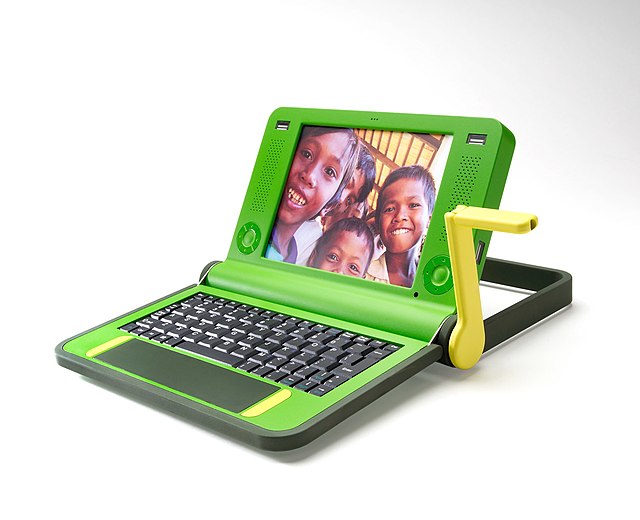One Laptop per Child (OLPC) was a non-profit initiative established with the goal of transforming education for children around the world; this goal was to be achieved by creating and distributing educational devices for the developing world, and by creating software and content for those devices.
OLPC XO-1 original design proposal
OLPC XO-1 laptop in e-book mode
A second generation prototype came with a crank that proved unviable.
OLPC XO-1 laptop
A laptop computer or notebook computer, also known as a laptop or notebook, is a small, portable personal computer (PC). Laptops typically have a clamshell form factor with a flat-panel screen on the inside of the upper lid and an alphanumeric keyboard and pointing device on the inside of the lower lid. Most of the computer's internal hardware is fitted inside the lower lid enclosure under the keyboard, although many modern laptops have a built-in webcam at the top of the screen, and some even feature a touchscreen display. In most cases, unlike tablet computers which run on mobile operating systems, laptops tend to run on desktop operating systems, which were originally developed for desktop computers.
Clockwise from top left: A 2021 MacBook Pro by Apple Inc.; a 2019 Microsoft Surface Pro 7 with detachable hinge (left) and a 2018 Dell XPS 15 9570 with 360 degree hinge (right); a 2014 ThinkPad Helix by Lenovo with detachable screen; and a 2014 Acer Chromebook 11
Alan Kay holding the mockup of his Dynabook concept in 2008
IBM 5100 (1975)
The Epson HX-20, the first "notebook computer", was invented in 1980 and introduced in 1982.








